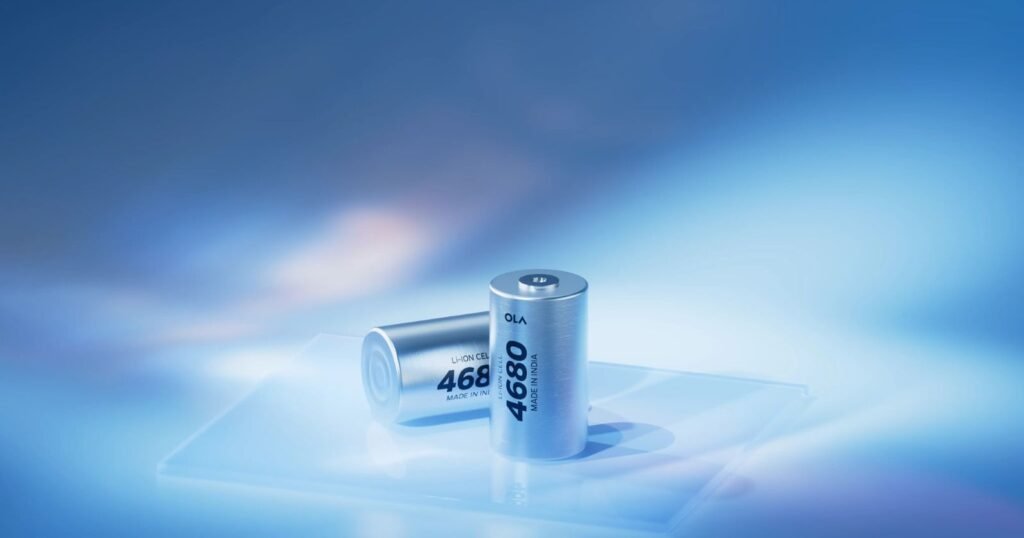Ola vs LG, The race for electric vehicle (EV) dominance has just taken a dramatic turn. Ola Electric — India’s pride in clean energy innovation — is suddenly in the spotlight for all the wrong reasons. Reports from South Korea allege that Ola received proprietary battery technology from a former LG Energy Solution (LGES) researcher. But Ola isn’t taking this lightly. The company has hit back hard, calling these allegations baseless and motivated. At the center of the storm? Ola’s groundbreaking 4680 Bharat Cell, the company’s homegrown innovation that aims to redefine battery manufacturing in India.
So, what really happened? And why has this issue sparked an international controversy? Let’s break it down.
What Triggered the Allegations?
In October 2025, South Korean media reported that a former LG Energy Solution researcher, known only as “Mr. A,” was under investigation. The country’s National Intelligence Service (NIS) and Seoul Metropolitan Police were reportedly probing him for leaking confidential battery technology to India’s Ola Electric.
According to these reports, the researcher joined Ola in late 2023 and allegedly transferred proprietary pouch-type ternary lithium-ion battery data, including production processes and manufacturing know-how.
The scandal intensified when LGES claimed it had discovered the data breach earlier in 2025. Following this, the researcher was dismissed and referred for prosecution. Interestingly, “Mr. A” admitted to sharing data — but insisted he didn’t realize it was confidential.
This case has been described in South Korea as one involving “core national technology,” highlighting the seriousness of the situation.
Ola Electric Fires Back: “Baseless and Motivated by Fear”
Ola Electric’s response was swift and sharp. In a public statement, the company called the allegations “baseless” and “motivated by fear of competition.”
Ola argued that the timing of these reports — just as it was gearing up for the commercial rollout of the 4680 Bharat Cell — was suspicious. The company suggested that these claims were orchestrated by rivals scared of losing their market dominance.
“The fear of losing market opportunities, including a significant customer in Ola Electric, is prompting the foreign rival to attack an indigenous battery innovation,” the company said.
Ola also clarified that its new cell design uses advanced cylindrical dry electrode technology, which is completely different from the older pouch-type cells referenced in the leak allegations.
In other words, Ola claims it’s building something entirely new — not repackaging borrowed tech. This marks one of the most intense moments in the Ola vs LG dispute.
Understanding the 4680 Bharat Cell: India’s Battery Revolution
So, what exactly is the 4680 Bharat Cell?
According to Ola Electric, this is India’s first indigenously developed large-format lithium-ion cell, designed to compete globally with Tesla-style battery technology.
Mass production began in mid-2024 at Ola’s gigafactory in Tamil Nadu, built with an investment of around ₹2,500 crore.
The 4680 Bharat Cell boasts:
- 20% higher energy density than traditional 2170 cells
- Longer driving range for EVs
- Improved efficiency and faster charging
It’s not just about better batteries — it’s about self-reliance. Ola claims to have filed 720 patents, with 124 already granted, and has a team of over 250 battery specialists at its Battery Innovation Centre in Bengaluru.
That’s a serious statement of intent in the growing Ola vs LG technology rivalry.
Why Is This Such a Big Deal?
The Ola vs LG spat isn’t just about corporate rivalry — it’s symbolic of something much bigger.
India’s government has been pushing aggressively for “Make in India” and clean energy independence. Homegrown innovation like the Bharat Cell represents that dream — a future where India leads in sustainable manufacturing rather than depending on foreign suppliers.
When Ola announced its 4680 Bharat Cell, it wasn’t just launching a battery; it was making a geopolitical statement.
The company’s technology could play a pivotal role in reducing India’s import reliance and boosting domestic EV production.
The Economic Stakes: Billions on the Line
Let’s talk money.
In September 2025, Ola Electric applied for ₹400 crore under the government’s Production-Linked Incentive (PLI) Scheme, which rewards domestic manufacturers for building advanced products in India.
The incentive — calculated at around 13% to 14% — could give Ola a major boost in liquidity and profitability.
Add to that Ola’s IPO in 2025, and it’s clear the company has a lot riding on maintaining a strong image as a clean, innovative, and honest manufacturer.
So, when allegations of tech theft surfaced, the timing couldn’t have been worse for the ongoing Ola vs LG saga.
Is This a Case of Fear or Fact?
It’s not unusual for global tech giants to feel threatened when emerging players start innovating on their turf.
Ola claims that LGES — one of the world’s leading battery producers — is afraid of losing market share in India and beyond.
From Ola’s perspective, the allegations are nothing more than an attempt to discredit its success story.
But from LG’s side, the issue could be about protecting intellectual property — something every technology company takes seriously.
Until official findings are released, both sides are standing firm on their narratives, keeping the Ola vs LG dispute in global headlines.
Ola’s Technological Leap: Dry Electrode and Cylindrical Design
Ola’s key defense lies in the fundamental difference between its tech and LG’s.
LG Energy Solution is known for its pouch-type lithium-ion cells, which use liquid electrodes. In contrast, Ola’s 4680 Bharat Cell features a cylindrical form factor and dry electrode technology — the same cutting-edge approach used by Tesla in its next-gen batteries.
This dry process eliminates solvents, reduces manufacturing costs, and makes cells more energy-efficient.
If Ola’s claims hold true, its innovation could indeed leapfrog traditional pouch technology, making it unlikely that any LG design was copied or reused.
National Pride and Global Implications
This controversy hits deeper than corporate interests — it’s about national pride.
India’s EV sector is one of the fastest-growing in the world. A successful indigenous battery program like Ola’s could position India as a global hub for energy innovation, challenging China, South Korea, and Japan.
For many Indians, the 4680 Bharat Cell isn’t just a product; it’s a symbol of independence — proof that India can compete at the highest technological levels.
That’s exactly why this case is being followed so closely — not just by the media, but by policymakers and investors worldwide.
What Happens Next?
As of now, South Korean authorities are continuing their investigation into the alleged data breach. The researcher at the center of the storm has been dismissed and referred for prosecution.
Ola, meanwhile, insists that it has no connection to any leaked intellectual property and continues to operate transparently.
The company remains focused on scaling up its battery production and EV lineup, reiterating its commitment to India’s clean energy mission.
“We will not allow business rivalries or motivated media speculation to derail India’s push toward global leadership in clean energy and battery innovation,” Ola declared.
The final outcome of this investigation could set a precedent for how international tech disputes are handl in the era of globaliz innovation.
Read More: Trent Share Price Drops After ‘Soft’ Q2 FY26 — Is the Retail Giant Losing Steam?
Conclusion
The Ola vs LG dispute isn’t just about who owns what piece of technology — it’s a clash between innovation and intimidation, between emerging ambition and established power.
Whether or not Ola is clear of all allegations, one thing is clear: India’s electric dream is no longer just talk. Companies like Ola Electric are pushing the limits of what’s possible — and the world is watching closely.
As the dust settles, the outcome will likely shape not just the future of Ola Electric, but the future of India’s place in the global EV race.









